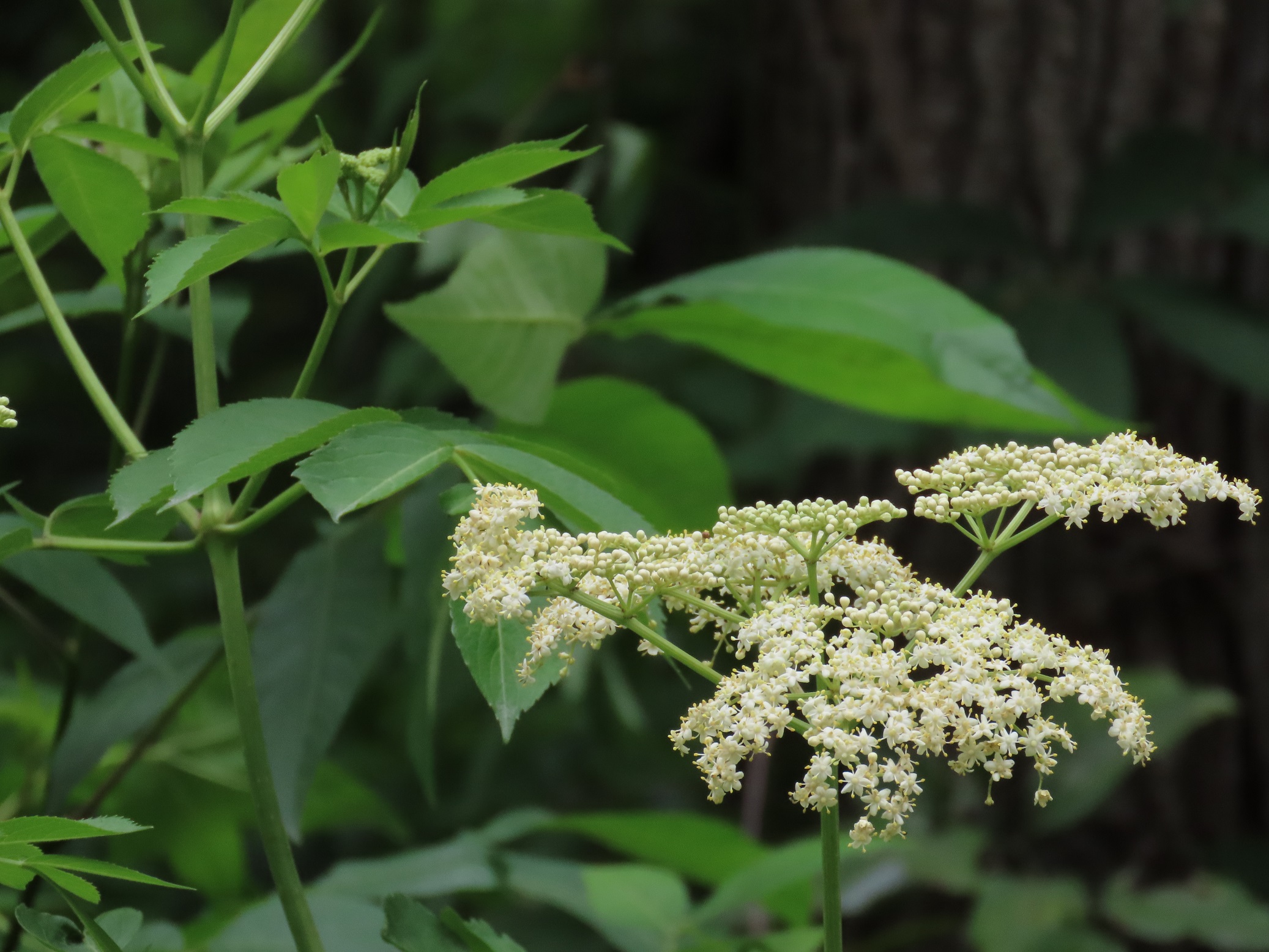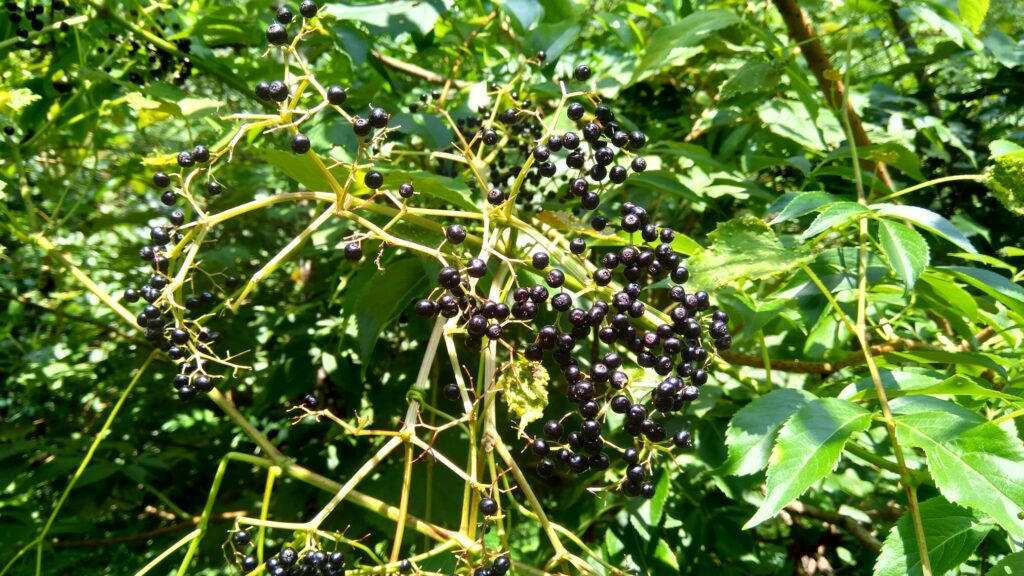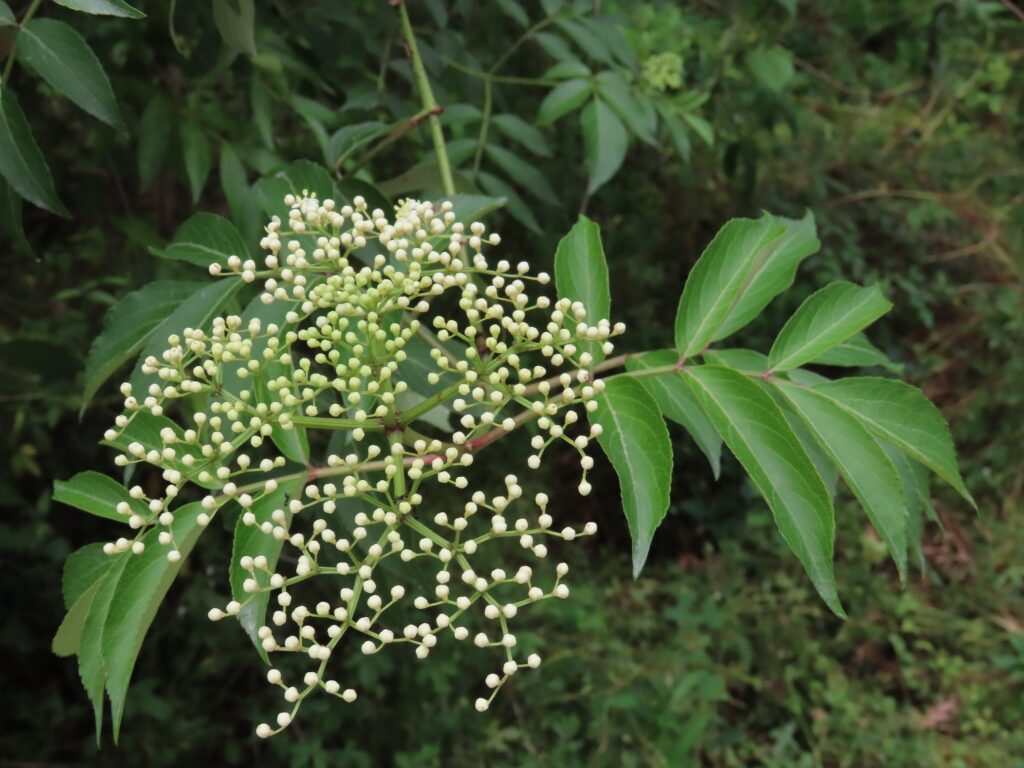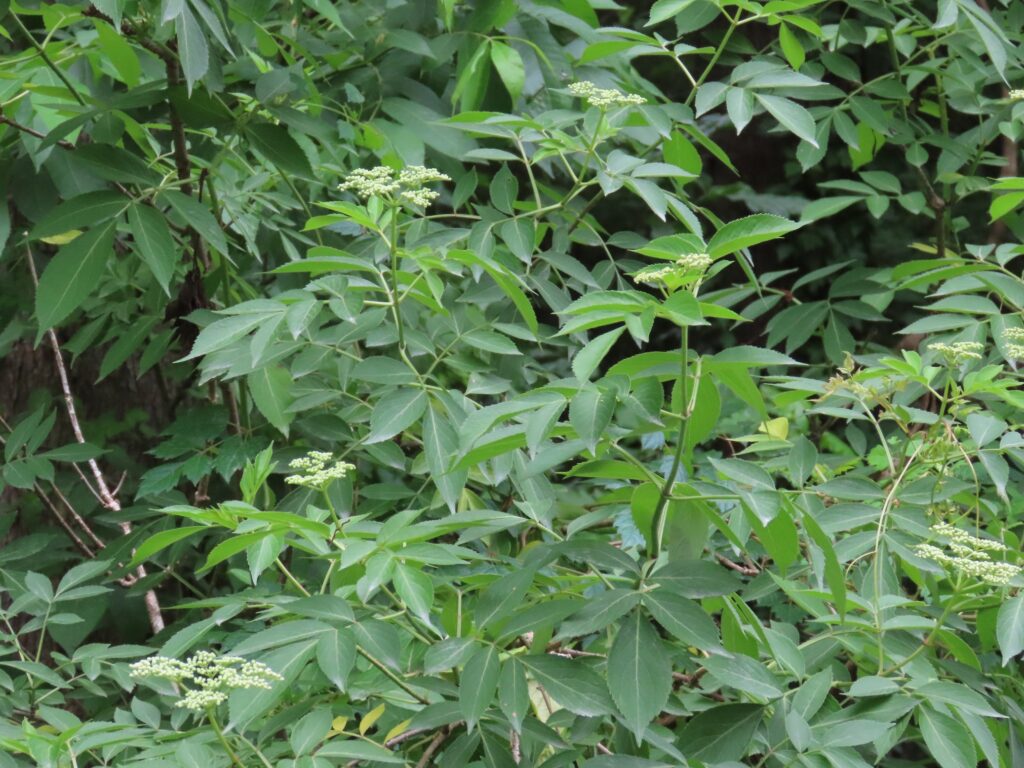



This week for Flora and Fauna Friday we have a shrubby medicinal plant with impressive floral displays. This week we’re looking at American Black Elderberry (Sambucus canadensis).
Elderberry is a large shrub partial to wet, sunny soils and common within the ditches along our Scenic Byway 174. Elderberry can grow to 12 feet high with dense intermingled foliage. Leaves are oppositely arranged and pinnately compound. Stems are green transitioning to tan, with a fine warty texture. Elderberry is a deciduous perennial and, despite its considerable size, dies back to its roots after a hard freeze. The stems of Elderberry are hollow and brittle. These tubular trunks provide a refuge from the cold to insects and spiders over the winter. (With a mild winter like this last, Lowcountry shrubs have survived in entirety.) Elderberry blooms from spring through summer, peaking the end of May. Flowers are small with five ivory white petals and presented in large spreading clusters, hundreds at a time. Each Elderberry bush produces dozens of these flower clusters at once, littering the roadsides with frothy flowers. These flowers are a beacon for pollinators, beckoning scads of small insects, like the Lovebug. The flowers fall away with age, leaving nothing but gleaming pearls of saccharine black. Through summer, the boughs of Elderberry bow from the burdening of berries. The petite fruits are a banquet for the usual suspects. Mockingbirds, Raccoons, and Cardinals gorge themselves on this fare of sweet treats, ferrying the seeds within their bellies. As these critters wander on wing and claw, they discard the remnants of past feasts wherever they chance to be. With a winter’s rest, new Elderberries coil forth afar.
Elderberries are edible for humans too. However, the seeds are mildly toxic, so the berries should be boiled and strained first to avoid indigestion. Elderberry juice has been used for centuries in traditional medicine as a cold and flu remedy and the berries are fairly nutritious. Research into the plant’s medicinal properties has been scarce but the few studies that exist appear to corroborate the claims of traditional medicine.